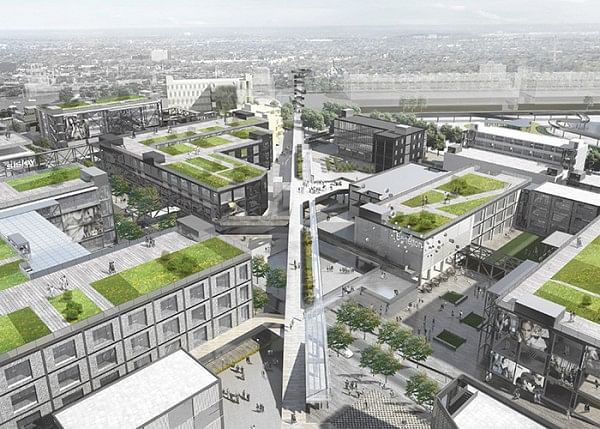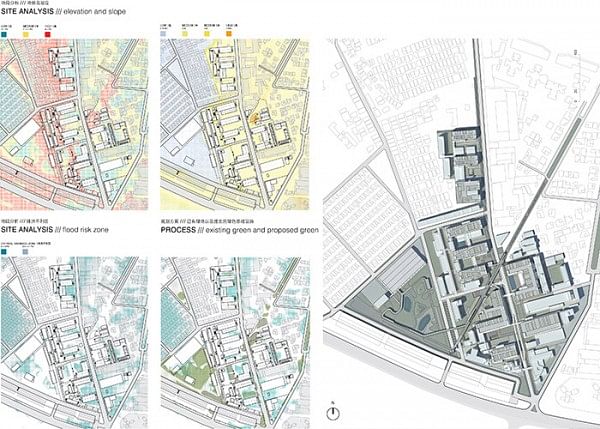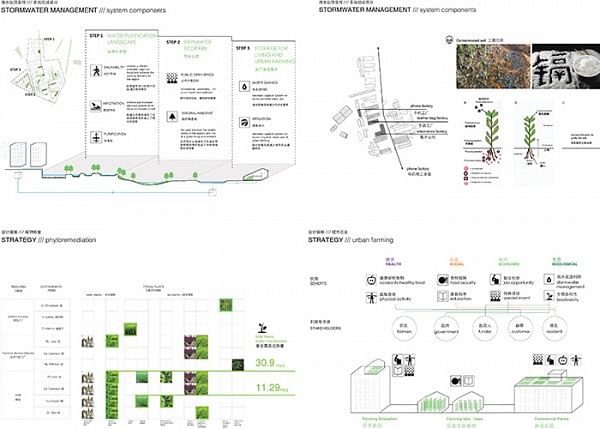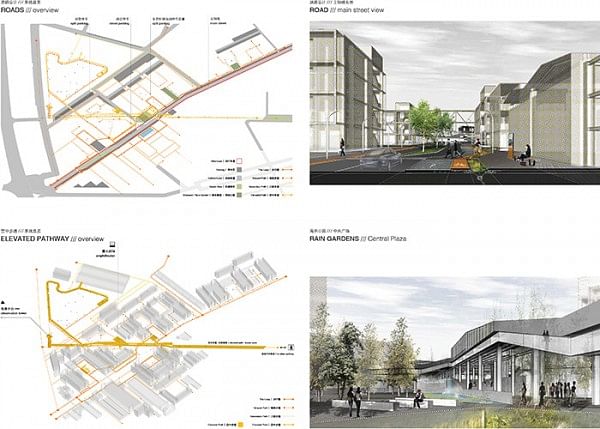

Located in Dongguan, #33 Art District envisions the urban regeneration of an industrial site of 16.6 hectares into a campus for creative industry–a dynamic hub for innovation, collaboration and production – that could play an important role in Dongguan’s transition from an industrial to a knowledge-based economy.
The masterplan on the one hand aims at introducing new programs into the vacant buildings, forming new functional clusters, on the other hand it retrofits public urban spaces and landscape elements into the existing urban fabric. Through a series of interventions at different scales, the design of the campus redefines new ways of living, working and learning that span both indoor and outdoor.
Status: Competition Entry
Location: Dongguan, CN
My Role: Rendering the perspectives and diagram drawing in this project.
Additional Credits: CC LTD, reMIX Studio






